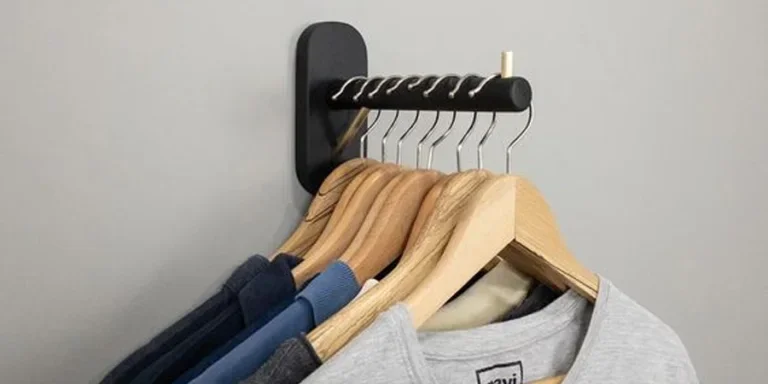In the fast-paced world of home and commercial organization, selecting the right laundry hangers and racks is crucial for maintaining an orderly and appealing environment. As 2024 approaches, the choices made in these seemingly mundane products can significantly impact operational efficiency and spatial aesthetics. Optimal selections not only enhance the functionality of storage areas but also contribute to the overall decor, reflecting a meticulous attention to detail and care in maintenance. This focus ensures that every aspect of space management is harmonized with the broader aesthetic and operational goals of a business.
Table of Contents
1. Varieties and applications of laundry hangers and racks
2. Insights into the 2024 market trends
3. Criteria for selecting the right products
4. Leading models and their distinct features
1. Varieties and applications of laundry hangers and racks

As the landscape of home and commercial organization evolves, the diversity and functionality of laundry hangers and racks continue to expand. These tools are not just utilitarian devices but pivotal elements in optimizing both space efficiency and aesthetic value. Understanding the various types available and their specific applications can greatly influence purchasing decisions and operational setups in various spaces.
Different types of hangers and their specific uses
Laundry hangers come in an array of designs tailored to different types of clothing and storage needs. General-purpose hangers, often made of plastic or metal, are common for everyday clothes. However, for more specific needs, there are several specialized types. Pants hangers usually feature a sturdy bar for draping trousers without causing creases. Similarly, skirt hangers often come with clips that hold garments firmly at the waist, preventing slips and wrinkles.
Suit hangers are broader and more robust, designed to support the structure of jackets and coats, thereby maintaining their shape. Specialty hangers like those for belts or ties are crafted to store these items compactly and without damage. The design and material of a hanger can significantly affect the longevity and appearance of apparel, making the choice of the right type crucial for wardrobe maintenance.
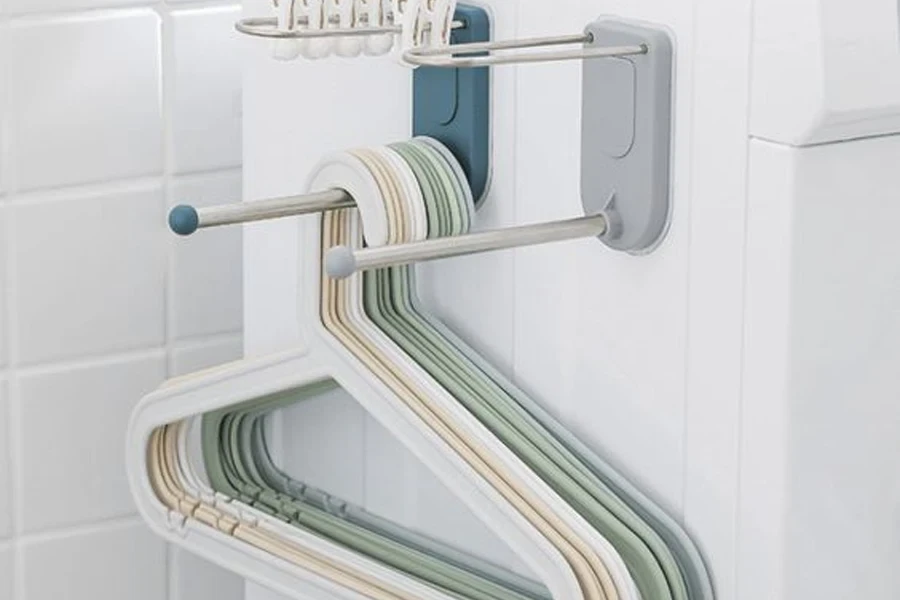
Exploring various laundry racks
Moving from hangers to racks, the variety expands further to accommodate different spatial and functional requirements. Freestanding racks are popular in homes and businesses for their mobility and versatility. They can be situated in laundry rooms, bedrooms, or even entryways, offering a convenient spot to hang clothes fresh from the dryer or the iron.
Wall-mounted racks are a space-saving solution ideal for smaller spaces or tight corners. They can be installed above other furniture or in narrow areas, expanding storage possibilities without occupying floor space. Expandable racks offer flexibility; they can be extended to accommodate more items as needed or retracted to save space when not in use.
Each type of rack serves distinct needs, from heavy-duty models capable of holding wet laundry to decorative ones that enhance room aesthetics while providing moderate hanging space. The choice between these types depends largely on the volume of laundry handled and the physical constraints of the storage area.
These tools, hangers, and racks, though often overlooked, play a fundamental role in the efficiency and organization of laundry systems within both domestic and commercial environments. Their selection should consider both the specific types of garments to be hung and the space where they will be used, ensuring that they meet functional demands while contributing positively to the overall room decor.
2. Insights into the 2024 market trends

As the world steps into 2024, the trends shaping the laundry storage solutions market are as dynamic as they are transformative. Driven by both market demand and groundbreaking technological advancements, these trends not only reflect changing consumer preferences but also the industry’s push towards more innovative, efficient, and sustainable products.
Experts currently value the global clothes hangers market at US$ 5.38 billion as of 2022, and they project it to reach US$ 7.47 billion by 2030, growing at a compound annual growth rate (CAGR) of 4.19% from 2024 to 2030. North America dominates the market share, driven by a strong commercial sector demand. Key players in this market include Only Hangers, M&B Hangers, and Bend and Hook, among others. The market growth is influenced by an increasing preference for multifunctional and environmentally friendly products, alongside innovations such as intelligent hangers which add value through additional functionalities.
Market demand and consumer preferences
Recent analysis indicates a marked shift in consumer preferences towards laundry solutions that are not only space-efficient but also environmentally friendly. Individuals are increasingly opting for products that offer enhanced durability and aesthetic appeal, aligning with the broader trend of eco-conscious consumerism. This shift is particularly noticeable in urban areas where space is at a premium, and the demand for multi-functional and compact designs is significantly high.
Consumers are showing a strong preference for customizable and adaptable laundry systems that can be tailored to fit small spaces. These preferences are influencing manufacturers to rethink design standards and incorporate materials that are both robust and stylish. Additionally, the rise of smart homes has led to an increased appetite for laundry hangers and racks that seamlessly integrate with other home systems, offering automation and advanced functionality without compromising on design.
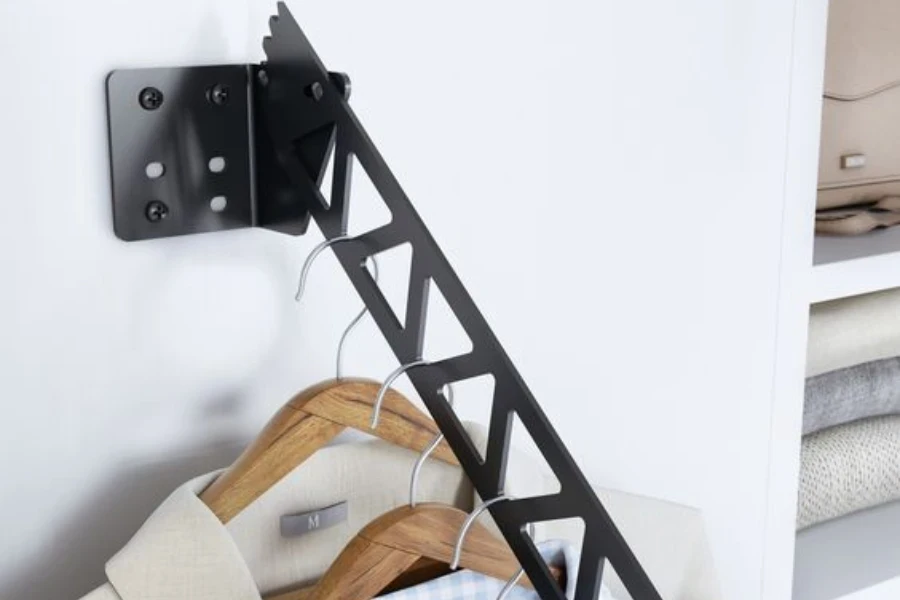
Technological advancements in product design
In response to these consumer trends, 2024 has seen notable technological innovations in the design and functionality of laundry hangers and racks. Manufacturers are leveraging cutting-edge materials that enhance the durability and sustainability of their products. For instance, the use of recycled plastics and sustainably sourced woods is becoming commonplace, reducing the environmental footprint of new laundry solutions.
Moreover, the incorporation of adjustable features and modular designs allows for a more personalized and space-efficient use of laundry accessories. These innovations are not merely about aesthetic enhancement but are focused on providing real-world solutions to storage and accessibility challenges faced by consumers daily.
Technological integration has reached a new level with the development of smart-enabled laundry systems that can be controlled via smartphone apps. These systems monitor energy use, optimize operation times based on utility rate fluctuations, and even alert users to maintenance needs. This smart functionality aligns perfectly with the growing trend of home automation, providing consumers with unprecedented control over their home environments.
These trends underscore a significant evolution in the laundry storage market, reflecting broader shifts in consumer behavior and technological innovation. As these trends continue to develop, they promise to redefine the standards of convenience, efficiency, and sustainability in home and commercial environments, setting new benchmarks for what is possible in laundry management.
3. Criteria for selecting the right products

When it comes to selecting laundry hangers and racks for both home and commercial use, the decision-making process is guided by several critical criteria. These include assessing the quality and durability of the products, considering the available space and usability, and ensuring aesthetic and design compatibility. Each of these factors plays a pivotal role in choosing products that are not only functional but also long-lasting and visually appealing.
Assessing quality and durability
The quality and construction of laundry hangers and racks are foundational to their durability and long-term performance. Selecting items made from high-quality materials can significantly extend their lifespan and enhance their functionality. For instance, hangers designed with robust materials like solid wood or reinforced metal are better suited to support heavier garments without bending or breaking. Similarly, racks constructed with durable metals or composites offer greater stability and can withstand the rigors of daily use.
In the current market, there is a noticeable trend towards using advanced materials that are not only strong but also environmentally sustainable. Recycled plastics and sustainably sourced woods are increasingly common, reflecting a shift towards more eco-friendly products. This not only helps in reducing the environmental impact but also caters to the growing consumer demand for sustainable home organization solutions.
Considerations for space and usability
Space optimization is a critical consideration, especially in settings where square footage is at a premium. The functionality of a laundry hanger or rack often depends on how well it fits into the available space. For smaller areas, collapsible or wall-mounted racks that maximize vertical space without cluttering the floor are ideal. These solutions allow for efficient use of space while maintaining easy access to hung garments.
Adjustability is another important feature that enhances usability. Products that offer adjustable heights or expandable features can be adapted to different spaces and storage needs. This flexibility is particularly valuable in multi-use environments where the storage requirements can change frequently.

Aesthetic and design compatibility
The role of aesthetics in selecting laundry hangers and racks is more significant than it might appear. These items are often visible in homes or commercial spaces and should therefore complement the overall decor. Contemporary designs favor minimalism and sleek lines, which can blend seamlessly into modern homes and upscale laundry environments.
The choice of colors and finishes is also essential. Neutral tones like black, white, or natural wood can integrate effortlessly into most decor styles, enhancing the overall aesthetic appeal without overpowering the space. For commercial environments, cohesive aesthetics can convey a sense of professionalism and attention to detail, factors that can influence customer perception positively.
By considering these criteria, purchasers can make informed decisions that ensure they select products that are not only functional and durable but also align with their space and aesthetic needs. This thoughtful approach to product selection is crucial in achieving an optimized and appealing laundry management system.
4. Leading models and their distinct features
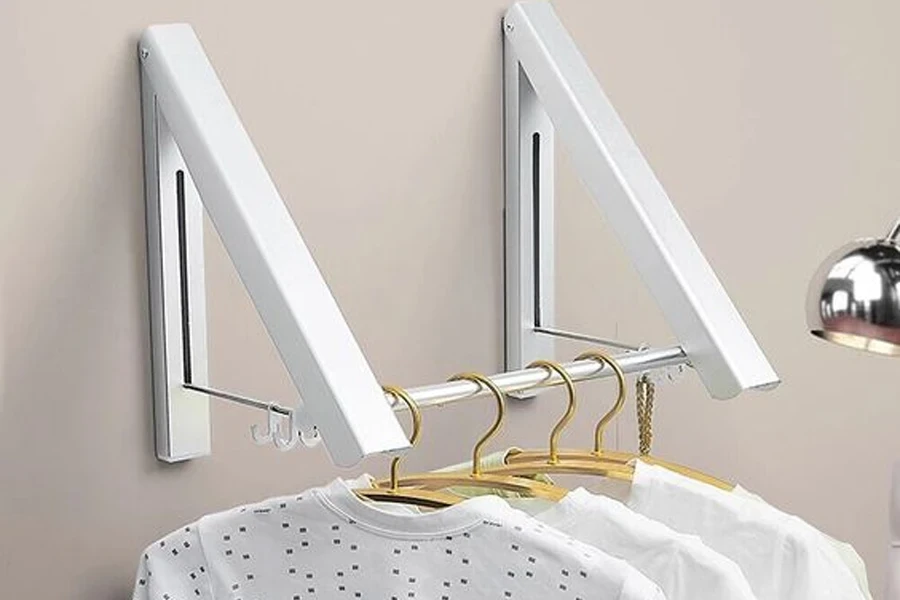
In the realm of laundry organization, certain models of hangers and racks stand out due to their innovative features and superior design. These leading models have set the standard for functionality and aesthetics in both residential and commercial settings, demonstrating why they dominate the market.
Review of top hanger models
Among the top contenders in the hanger market, the Proman Kascade Hanger exemplifies excellence in design and functionality. Known for its robust construction, the Proman Kascade Hanger is crafted from high-quality wood, offering a smooth finish that prevents snagging of garments. Its unique feature is the integrated loop system that allows for vertical stacking, significantly enhancing closet space efficiency. The design caters to a broad range of clothing types, reinforcing garments without compromising their shape.
Another notable model is the Joy Mangano Huggable Hangers. These hangers are celebrated for their ultra-thin design and velvety texture, which not only saves space but also gently grips clothing to prevent slipping. Perfect for delicate items and small closets, their colorfast material ensures that clothes remain pristine and unmarked. The Joy Mangano Huggable Hangers transform closets into elegant and organized spaces, making them a favorite among those who prioritize both functionality and style in their wardrobe management.
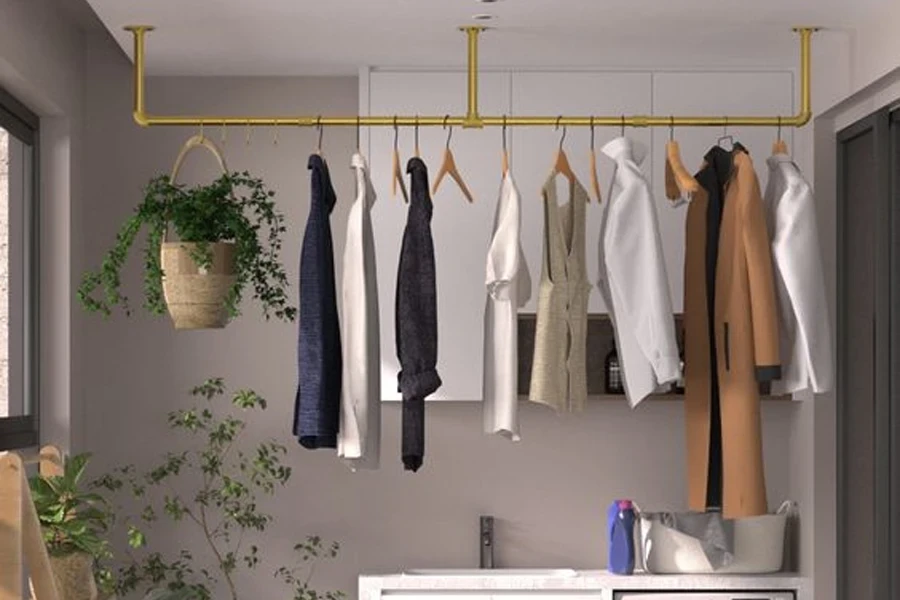
Best racks on the market
Turning to laundry racks, the Minky 3 Tier Plus Indoor Airer stands out for its versatility and expansive drying capacity. This rack features multiple levels and additional hanging spaces that extend to accommodate everything from small undergarments to large bed linens. It is especially valued for its robust construction and ease of storage, folding down flat when not in use. The Minky 3 Tier Plus is ideal for large households or settings where air-drying of clothes is routine, offering a durable and flexible solution to laundry drying needs.
The Untyo Clothes Rack, another top performer, offers an exemplary blend of style and substance. With a sleek design that includes two sturdy hanging rods and adjustable shelves, this rack is a quintessential choice for modern homes. Its mobile design, equipped with smooth-gliding caster wheels, makes it incredibly practical for moving around the home or in commercial spaces. The Untyo Clothes Rack’s robust metal construction and versatile storage options make it a comprehensive solution for anyone looking to streamline their laundry processes with a touch of elegance.
These models, from hangers to racks, not only cater to the basic needs of hanging and drying but also enhance the user’s experience through innovative features that address specific lifestyle and space requirements. As leaders in their respective categories, they continue to influence consumer preferences and drive trends in the home organization market.
Conclusion
Selecting the right laundry hangers and racks is essential for optimizing both operational efficiency and space management within any organizational setting. As 2024 approaches, staying abreast of market trends and technological advancements in these products will enable businesses to make informed choices that enhance functionality and aesthetic appeal, thereby ensuring an aligned and effective laundry management strategy.
